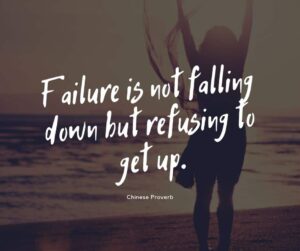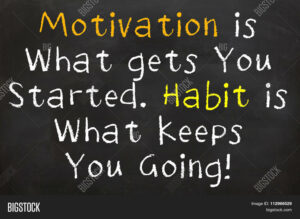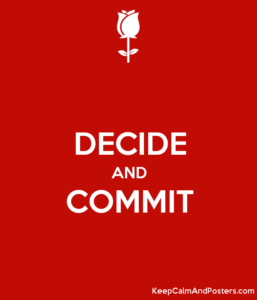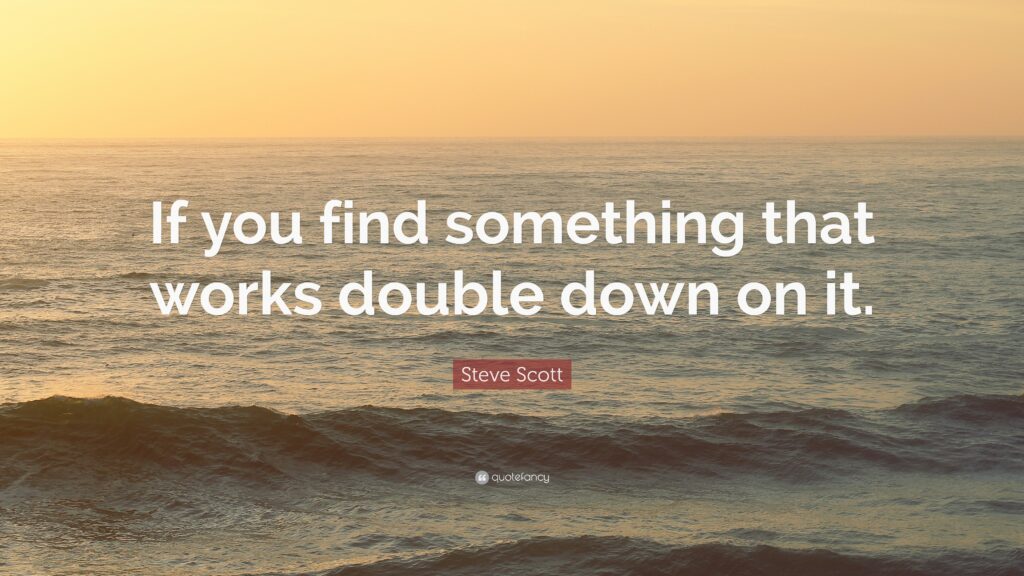Check out this second installment of tips & tricks for successfully working out at home!
Missed the first five tips & tricks for working out at home? Check them out!!
If you feel that you’ve gone completely off track since you’ve been home, I want to remind you that yesterday is not a reflection of today or tomorrow. I also want to remind you that trying to improve 17 things at once will not lead to any real success. Even if you want to make changes to both your workout routine and your nutrition choices, I really encourage you to pick just one. And since you’ve already been in a habit of working out, that’s the one I would start with; the low hanging fruit. Really isolate your focus on exercising and leave the nutrition stuff for later (there are some nutrition recommendations included within this content for whenever you’re ready).
I’ve had to make a deal with myself during this very crazy time, and my hopes in sharing is to spur a different perspective. My new rule for myself if that I can be frustrated and stressed out as much as I want…in response to 1 thing at a time. For example, when I’ve missed a week of workouts and have decided to eat meals based only on their yumminess, I can quickly fall in a tailspin of discouragement; it feels like I need to change EVERYTHING in order to improve anything. The addition of my new rule means that I can stress over just one of those things at a time. This forces me to prioritize the change I want to make, and that prioritization leads to greater focus. And with focus, our brains can move from the “problem” to “potential solutions.”
You can view these tips as your potential solutions. As ideas to try out and adjust based on what helps YOU.
TIP #6
GET INTO THE HABIT OF MOVING
With so many of us confined to the walls of our home, becoming sedentary is a very real concern. Really focusing on getting that time to complete at-home workouts is very important, but what about the other 15 waking hours of our day? Any opportunity you have to get up and move around is an opportunity to avoid becoming – or staying – sedentary. Even just taking a 10-minute walk outside a couple of times of day can be a huge help. When you’re tired of staring at your computer screen, get up and complete 50 jumping jacks. Or 10 push-ups or 15 sit ups, or literally anything. The more we get used to sitting around, the more we will sit around. But the opposite is also true: the more we become used to being active, the more active we’ll be.
If the risk of not moving your body is very real to you, I encourage you to experiment with creating small movement goals throughout your day. Maybe it’s an alarm you set every 2 hours to remind you to get out of your chair and move around. Maybe between Netflix episodes, you complete 20 high knees. Or maybe you have a goal to hit 10,000 steps today. The purpose of this one is not to make sure that you’re getting enough exercise, but to ensure that your body is in movement so that it doesn’t negatively impact your mind. Knowing that you are staying active in a way that’s fitting to you can bring that same peace of mind as you had while going to the gym.
TIP #7
LAY OUT YOUR WORKOUT CLOTHES THE NIGHT BEFORE
I know you’ve heard this one before and there’s a reason – this can be very effective because it forces us to make the decision the day before. Let’s say you decide to start working out tomorrow morning when you first wake up. You go to bed, you don’t sleep very well, and when your alarm goes off, you start questioning your morning workout. And as you’re getting your clothes out, you keep going back and forth as to whether you really want to exercise. If you have 2 hours between the time you wake up and the time you start working out, there is a whole of time for the possibility of NOT working out to sound a lot better. But if you woke up with your clothes already laid out and ready to go, the window of time you have to reconsider your decision to work out is much, much smaller.
I woke up this morning feeling like I was run over by a truck. I didn’t sleep well, I didn’t feel well-rested when I woke up, and I started making a mental list of everything that hurts. However, since I already had my running clothes laid out, I just put them on and left. By the time I was outside starting my run, I honestly had not had enough time to talk myself out of exercising. Preparing is what made the run the path of least resistance. It would have been harder for me to swap out all of my clothes than it was to just throw on those running clothes and hit the road. I also learned a pretty valuable lesson this morning: the way I feel when I start my run is absolutely no indication of how I will feel afterwards. If I had to pick out my workout clothes when I woke up feeling like garbage, I probably would have opted for sweatpants and a hoodie and just chilled in front of the tv. If I had made that choice, I would still feel like garbage right now.
TIP #8
TREAT YOUR WORKOUT AS YOUR DE-STRESS SESSION
No matter which habits we have in place, stress will find its way into our lives right now. But good news: stress and physical activity have a very hard time coexisting, and stress usually loses this battle. How many times have you arrived at the gym pissed off about your day at work, and then left having pretty much forgotten about the drama of the day? While this tends to be really effective while we’re at the gym (since it’s generally outside of our normal daily stressors), it’s something that we can practice while working out at-home as well. But it will take intention. Intentionally deciding before a workout that this will be your time to let go of all the stress. Thinking about exercise through this perspective takes a lot of the pressure off the actual workout, and allows us to focus on physically exerting the stress out of our bodies. Physical activity will change your mood. Intense physical activity will definitely change your mood.
Many of us are used to making decisions around exercise based on what we think we “should” do. The reason for the “should” is different for all of us, but maybe you’ve said this to yourself before: I should workout for the next 3 days because I haven’t worked out this week. However, if you treat your workouts as opportunities to alleviate your stress, it would put what you “should” do in a different context. Instead, you’ll reach for exercise when the stress is building up; not only because you feel better having worked out, but because the workout actually distances you from the thoughts that were ruminating in your mind, causing you to feel stressed.
Adjusting to this new perspective takes time and effort, but luckily, it’s not something you have to practice for months before it’s useful. The next time you work out while feeling frustrated, or sad, or angry simply visualize your level of stress decreasing the more you move your body. The more we feel that we are physically exerting our bodies, the more we lower the volume of those negative feelings, or mute them altogether. Exercise is, of course, extremely important for physical health, but it’s also insanely helpful for mental health as well. Staying aware of our stress levels at this point in time is necessary, but it’s just as important to know which activities will help you through that stress. We are responsible for our minds in the same way we’re responsible for our bodies.
TIP #9
TAKE CONTROL OF YOUR MEAL PLAN IF IT’S THROWING YOU OFF
Now that we’re home, we have a lot more access to food throughout the day. For some of you, this is no problem at all. For others, this is a struggle. If you are struggling to stay on track with healthy eating, I encourage you to meal prep. Regardless of whether you’re doing macros or just trying to eat whole, unprocessed foods, prepping your meals ahead of time helps to avoid the decision fatigue we discussed last week (when we make too many decisions and the quality of those decisions decline). If you are spending a lot of time deciding what to eat, then changing your mind, then changing it again, please take control of this by meal prepping.
Pick two days of the week to spend cooking a large amount of a meal (or meals) that you can portion into containers for the week. So when you get to lunchtime, you don’t need any brainpower to decide what to eat, because the decision has already been made. And when you can simply microwave an already prepped meal, and immediately sit down to eat it, the process becomes very simple. Will you stick to it every day? Probably not, and that’s not the point. The point is to give you back some of the control you may feel you lost. And when you mess up? You shake it off and try again. Notice I didn’t say, ‘you beat yourself up for the next three days and then try again.’ This will make success much harder to attain. So when you make a poor nutrition decision, shake it off, and try again; without judgement, without criticism, and with encouragement. Make success as easy to hit as possible.
Here are some resources for meal-prep ideas that are easy to cook in a large batch. The recipes below generally include paleo meals, but feel free to substitute ingredients to have it match your current nutrition plan:
Breakfast Meal Prep Ideas – https://www.paleorunningmomma.com/paleo-breakfast-meal-prep-bowls-whole30/
Lunch Meal Prep Ideas – https://www.brit.co/living/healthy-eating/one-pot-paleo-lunches-recipes/
Dinner Meal Prep Ideas – https://mealpreponfleek.com/paleo-recipes-dont-suck/
All-Day Meal Prep Ideas – https://spoonuniversity.com/recipe/10-paleo-meal-prep-recipes
TIP #10
UNDERSTAND YOUR EMOTIONS BEFORE EATING THEM
This crazy transition we find ourselves in is significant, and it can feel extremely emotional depending on your situation. To be honest, I’m still making the mental transition myself, and some days are harder than others. There have already been plenty of times when my frustration hits the ceiling and I truly just want to give up on the day. And when I feel like this I want cheeseburgers and pizza to make me feel better. Although I’m still in the process of working through this, I’ve come to a realization for myself: I don’t want my solution to one problem to worsen a different problem. And choosing extra-yummy food to help “solve” moments of emotional turmoil directly leads to causing a new problem: feeling out of control with my nutrition decisions.
This is one of the major reasons I like to focus on habits. Instead of telling myself that I must eat 100% clean, I’m able to decide on which specific nutritional elements I want to focus on. My current priority is water. My second priority is vegetables. As long as I’m following my habits for hydration and veggies, I feel in control of my nutrition choices. It’s simple and concise and clarifies how I’ll know if I did a good job.
We’ve talked about habits a ton, so this is just a quick review:
- Decide on ONE nutrition behavior to focus on daily. Make it as clear and simple as possible, such as: ‘drink half my body weight in ounces of water daily,’ or ‘eat at least 1 serving of vegetables with every meal.’ This gives you a clear marker to shoot for every single day.
- Once you feel that the daily behavior is ingrained as a habit (meaning, it feels more normal to do that thing than to not do it), decide on your next behavior. Generally speaking, allotting a month to each habit is a good rule of thumb, but use your judgement! If you have a solid routine in place to ensure that you drink enough water throughout the day, for example, go ahead and start your next habit.
By giving ourselves simple and clear parameters to stick to daily, we’re able to clarify the things we need to makes us feel in control of our nutrition decisions. And because I anticipate some pushback on this one, let me point out that we may be stuck at home for longer than a month. Why not use this time to build new daily behaviors that make you feel healthy and in control? Because if you don’t, you WILL unintentionally create habits that you may or may not want to hold onto. Creating a healthy habit is much less work than undoing an unhealthy habit. You are being ruled by habits whether or not you are aware of it, and we don’t want to end this period of time with a list of habits we need to undo in order to get back to where we were when this started.
And last, but definitely not least: Ask for help. Although we’re isolated, we’re not meant to handle this uncertainty alone. Share your struggles and successes with a friend who can share their experience as well. I am fairly certain that our experiences through this time are more alike than they are different, and leaning on someone who understands is therapeutic in and of itself. We’re not aiming for perfection; we’re aiming to continue our progress. Make progress as easy to hit as possible, and when you find yourself discouraged and defeated, know that we’re all going to experience those moments. Falling down means nothing when you get back up.







